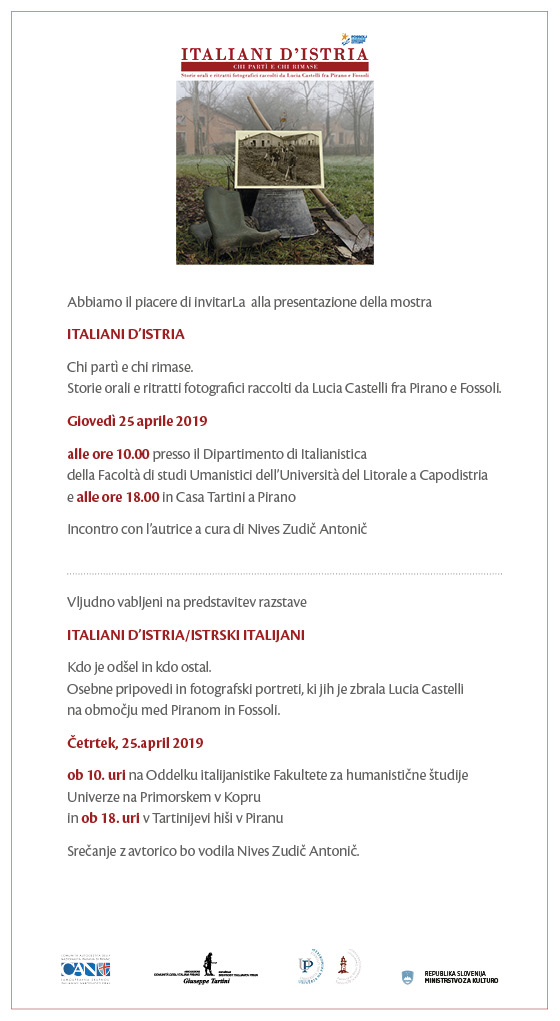Italiani d’Istria
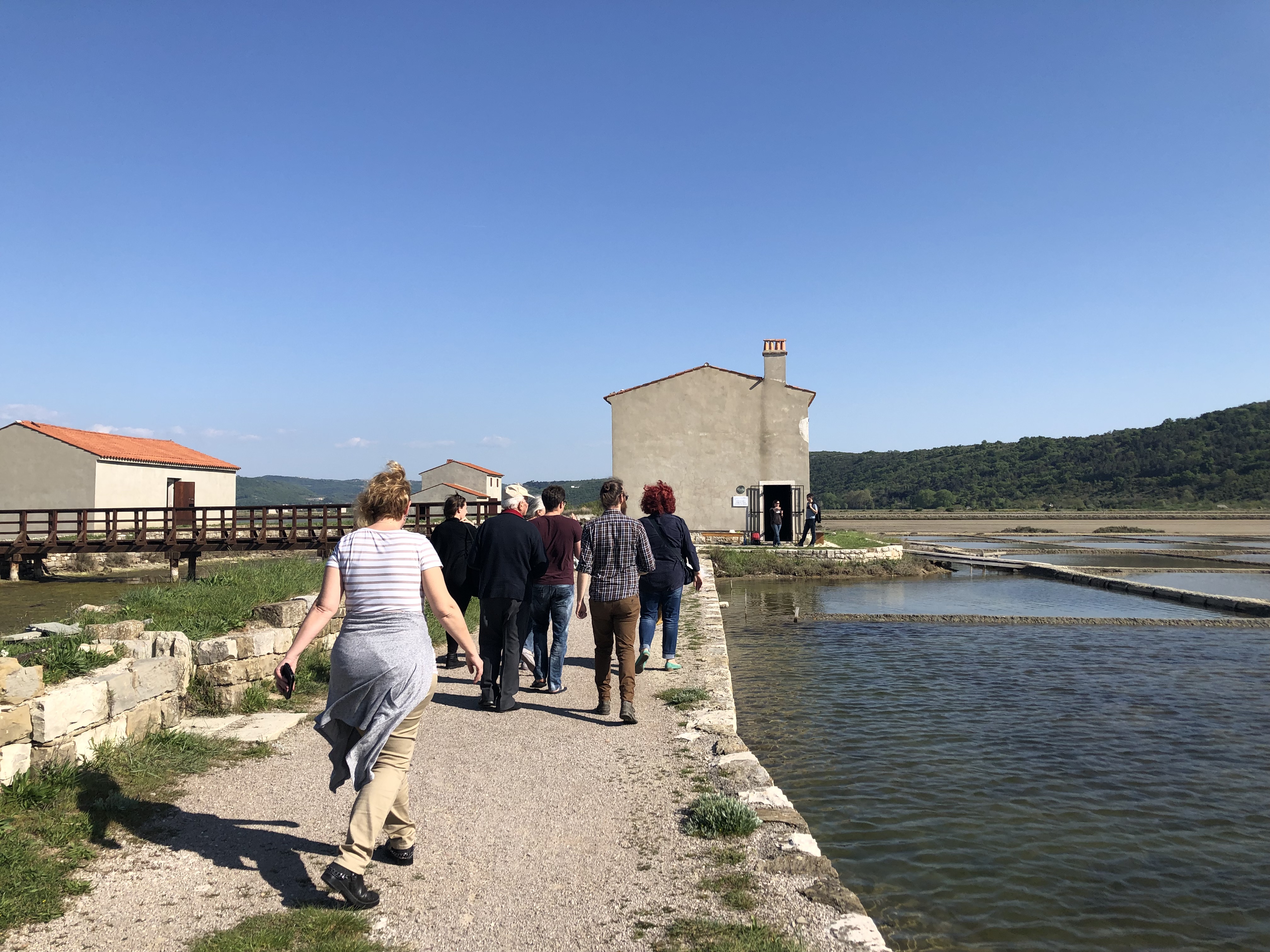
Visita in saline del signor Giovanni Petronio, salinaio
04/21/2019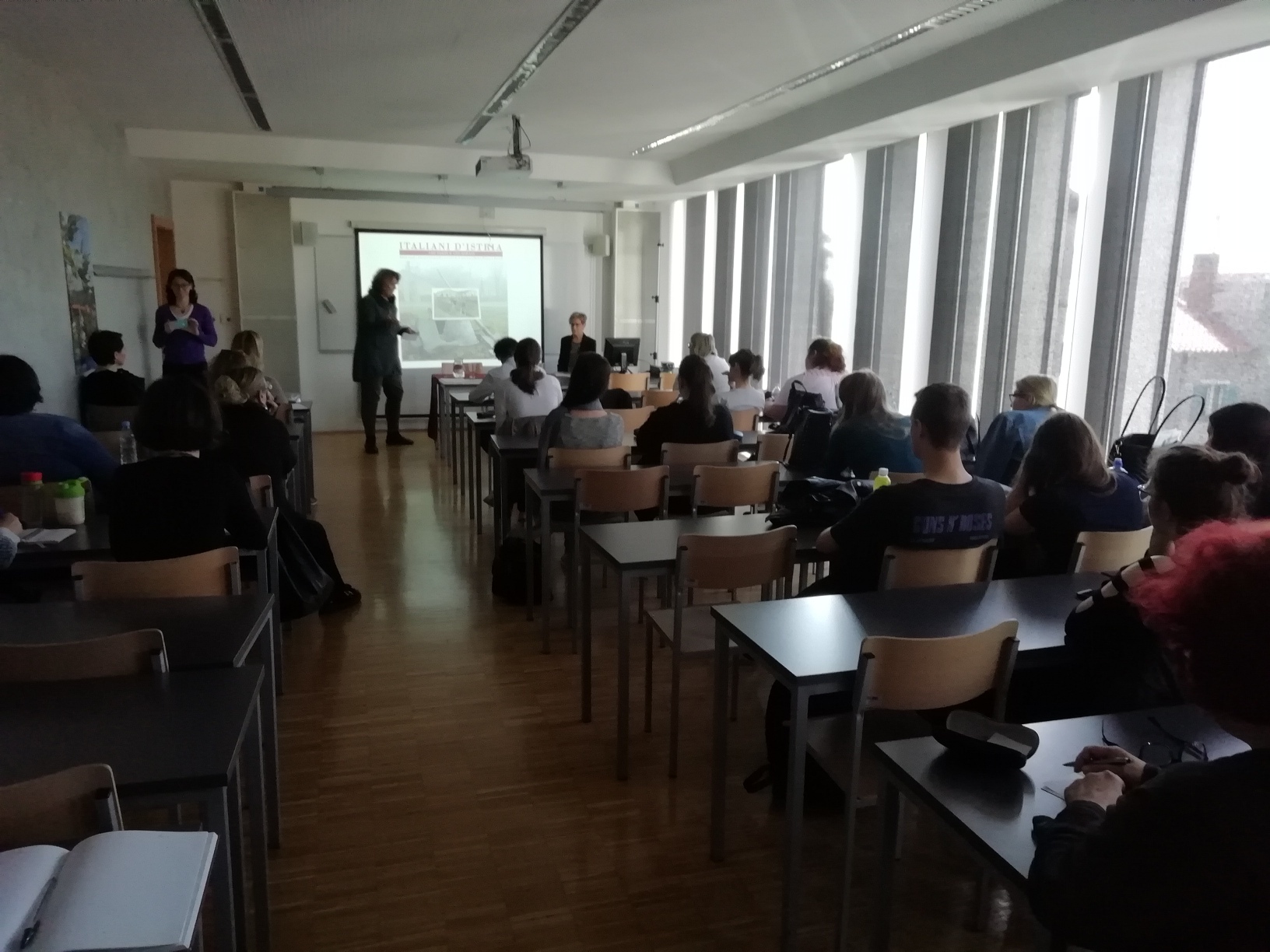
Incontro con Lucia Castelli
04/26/2019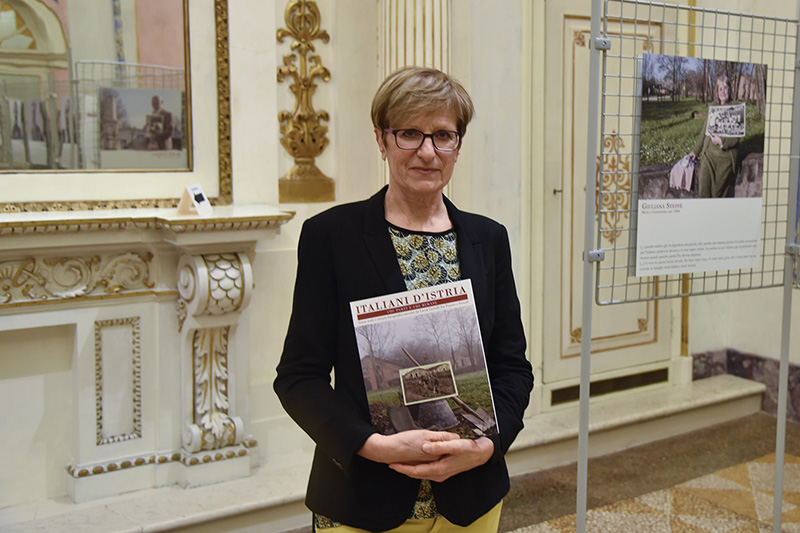
Storie orali e ritratti fotografici raccolti tra Pirano e Fossoli
Mostra-studio di Lucia Castelli
L’esodo giuliano-dalmata successivo alla cessione dell’Istria e altri territori italiani all’ex Jugoslavia, in seguito ai trattati stipulati nel secondo dopoguerra, è una pagina drammatica della recente storia italiana, che coinvolse anche Lucia Castelli e la sua famiglia. Dopo una prima riflessione sul proprio passato concretizzata nel 2013 nella mostra “Villaggio San Marco”, nome della struttura di Fossoli, all’interno della quale l’autrice trascorse la propria infanzia, Lucia Castelli ha portato avanti le sue ricerche lavorando su un progetto più ambizioso.
Con il sostegno della Fondazione Campo Fossoli e la supervisione scientifica del Centro Etnografico del Comune di Ferrara, Lucia a partire dal 2014 ha raccolto le testimonianze orali e realizzato i ritratti fotografici di oltre 50 “Italiani d’Istria” che oggi vivono in Italia tra Bologna, Firenze, Modena e Trieste, ma pure di alcuni che decisero di rimanere, faticosamente, nella terra d’origine.
Il risultato è lo spaccato di una comunità che venne dispersa, uomini e donne che, improvvisamente, si trovarono ad essere ospiti non graditi in una nazione straniera.
Lucia Castelli, nata a Carpi (MO) nel 1956, vive a Modena. Negli ultimi anni ha intrapreso un percorso mirato all’approfondimento della fotografia creativa costruita, partecipando ad esperienze laboratoriali che l’hanno portata ad esporre le proprie foto in prestigiose mostre collettive in Italia ed in Francia.
Con la personale VILLAGGIO SAN MARCO – FOSSOLI – CARPI (2013) ha avviato una ricerca, concretizzatasi con ITALIANI D’ISTRIA – CHI PARTÌ E CHI RIMASE, che la vede esplorare le proprie origini istriane adottando i criteri della ricerca etnografica.
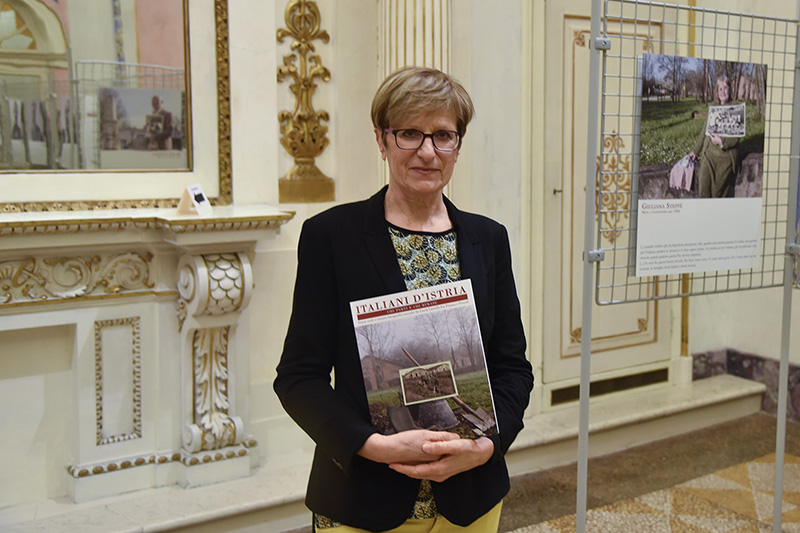
Giovedì 25 aprile 2019 alle ore 10 presso il Dipartimento di Italianistica della Facoltà di Studi Umanistici del Litorale a Capodistria, l’autrice della mostra racconterà agli studenti la sua esperienza fotografica. Farà da moderatrice dell’incontro la professoressa Nives Zudič Antonič.
Per chi non riuscisse a sentire l’autrice in mattinata, lo stesso giorno alle ore 18 in Casa Tartini a Pirano, ci sarà ancora un’occasione per incontrare e conoscere l’autrice.
Domenica 28 aprile 2019 invece alle ore 12.30 inaugurazione della mostra fotografica “Italiani d’Istria. Chi partì e chi rimase”. L’introduzione alla mostra sarà a cura di Kristjan Knez, Vicepresidente della Comunità degli Italiani “Giuseppe Tartini” di Pirano, Direttore del Centro italiano di promozione, cultura, formazione e sviluppo Carlo Combi di Capodistria e Presidente della Società studi storici e geografici di Pirano.
